Decapping / Cleaning / Inspecting
Note that decapping (removing the primer) is usually done concurrently with the resizing step. You (like me) may choose to decap before cleaning to ensure that the primer pocket gets clean, or skip a separate decapping step. If you decap during resizing, you might want to clean the primer pocket as an additional step after resizing.
Decapping and cleaning are of course unnecessary with virgin brass.
Cleaning
Cleaning removes grit and powder residue that can cover the inside, outside, and primer pocket of your case. There are two basic types of cleaning: wet and dry. Note that you'll want to separate cases by caliber to ensure that smaller caliber cases don't get lodged inside other larger caliber cases--possibly with cleaning media--and stay dirty.
Dry Cleaning
In the past, I have dry cleaned using a polishing media such as walnut shell particles lightly coated with polishing compound. This always seemed to leave a bit of polishing dust and dirt on cases, which can be wiped off. Dry cleaning can utilize tumblers or vibratory bins.
Since I no longer dry clean, I'm open to any comments on this.
Wet Cleaning
Ultrasonic cleaning is a variety of wet cleaning, though is easier in that no pins are needed. It's fine for smaller quantities of cases. The level of cleaning isn't nearly as great as tumbling using pins, but is probably quite sufficient to ready the case for reloading.
For
wet tumbling, cases are put into a tumbling bin. Water is added, then some type of detergent and usually stainless steel pins, and the cases are tumbled for a set period of time, maybe 30 minutes to 2 hours depending on how dirty the cases are. Ancient cases that you've rescued from dirt at the range would be at the higher end.
I like wet cleaning because it traps the dirt in solution with the water and detergent, which can then be poured off.
I've found this 3.3-liter Frankford Arsenal tumbler to be perfect for my needs since I rarely have more than 50 cases to clean. Frankford also makes a 7-liter version. Various manufacturers make similar products which are likely just as good.
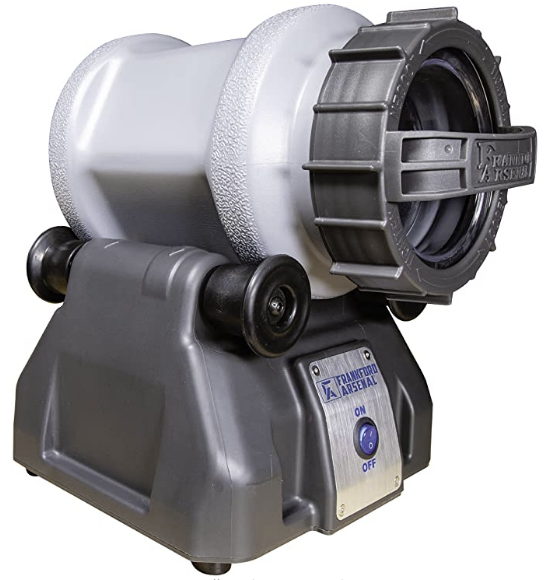
- FrankfordArsenalTumbler.png (262.98 KiB) Viewed 6229 times
As a detergent, some people like mixing their own with a bit of Dawn dishwashing detergent, a touch of Lemi Shine, and maybe a dab of NuFinish car polish. I like the results with Hornady One Shot Sonic Clean Solution. Again, there are many similar products. I've tried a few; this works for me and can also be used in an ultrasonic cleaner.
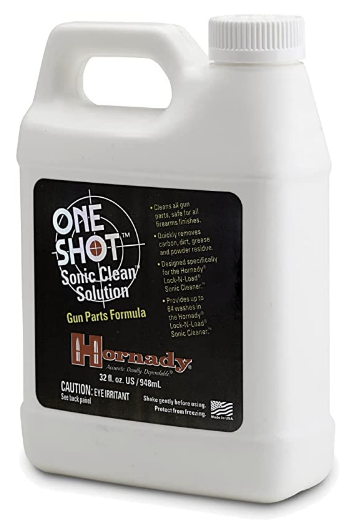
- HornadyOneShotSonicSolution.png (114.51 KiB) Viewed 6229 times
Some of my friends (and folks on YouTube) believe they get decent cleaning results without using stainless steel media ("pins") while tumbling brass. I find the pins also do a good job inside the case, especially the case mouth.
I personally like the pins available from Southern Shine Media, which seem to be available primarily on Facebook. The pins are smaller and sharper, and seem to clean the primer pocket well (assuming you decap before cleaning). They do tend to put micro scratches on the brass, but also need a shorter cleaning time. The Southern Shine media is magnetic, so can be handled using magnets.
https://www.facebook.com/southernshinemedia/
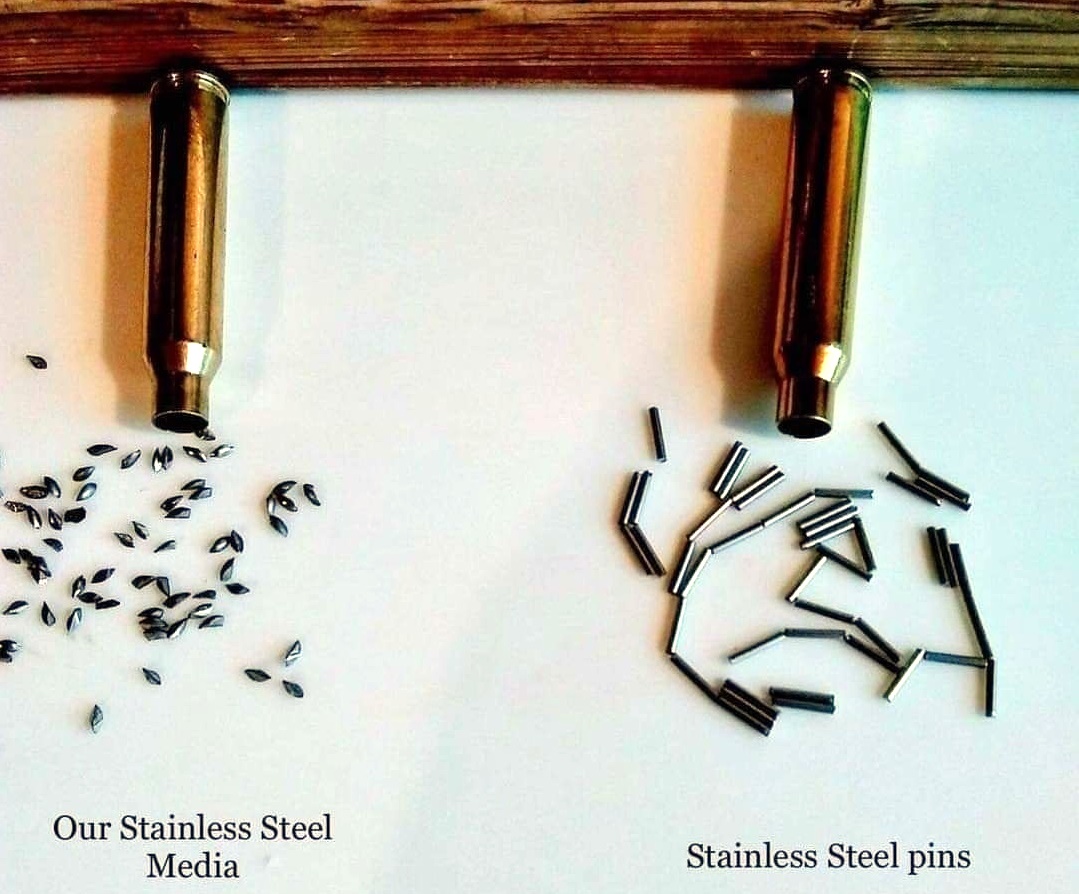
- SouthernShineMedia.jpg (262.22 KiB) Viewed 6229 times
After tumbling with pins, the pins must be separated from the brass cases. A media separator does a surprisingly thorough job of this, spinning the pins and cases, letting the pins escape between the slots in the separator. While still in the media separator, I first rinse with tap water. This is a Frankford Arsenal Media Separator.
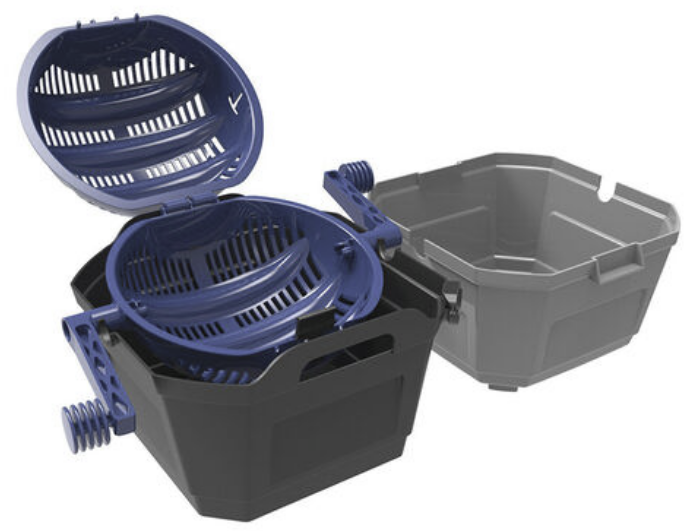
- FrankfordArsenalMediaSeparator.png (238.55 KiB) Viewed 6226 times
To remove any remaining pins, I've found that a very strong magnet waved though the brass will pick up the last remaining pins.
https://www.kjmagnetics.com/proddetail. ... DX08TP-N52
After this, to do a final rinse of the cases, I spray them with distilled water while running my hand through them, still in the media separator.
As the near final step, I wipe excess water off the cases with a microfiber towel and dry them.
I have used the oven a number of times, but found that the cases occasionally get a bit discolored plus retain some water spots. Leaving them outside also works, but might take a long time (especially during winter) and result in water spots.
I've been using a dehydrator to quickly (one hours) dry them. There are dehydrators made specifically for this, though I've been using a fruit dehydrator that I found on Amazon.
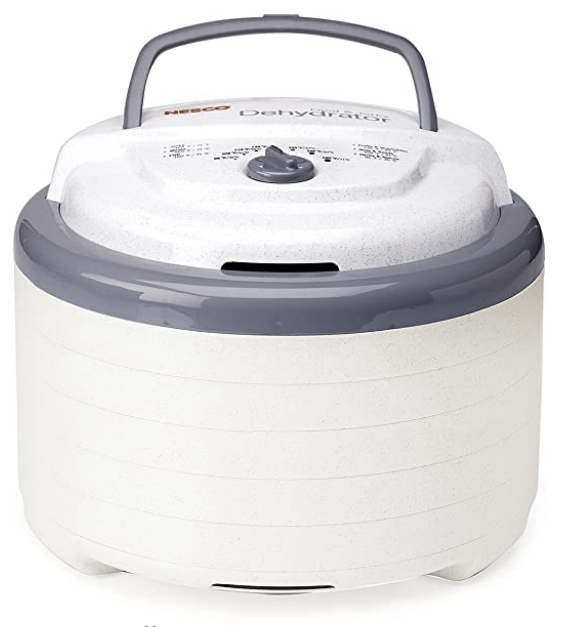
- Dehydrator.png (187.37 KiB) Viewed 6226 times
Finally, I check the dried cases to ensure that no pins are inside the case or lodged anywhere, such as the primer pocket or flash hole. again holding a strong magnet near them. This is also a great time to look for any damage such as split mouths or impending case head separation.
Note I also rinse the pins in the bottom of the media separator then use the dehydrator to dry them on top of a shop towel. They're stainless, so won't really rust, but it's an easy step.